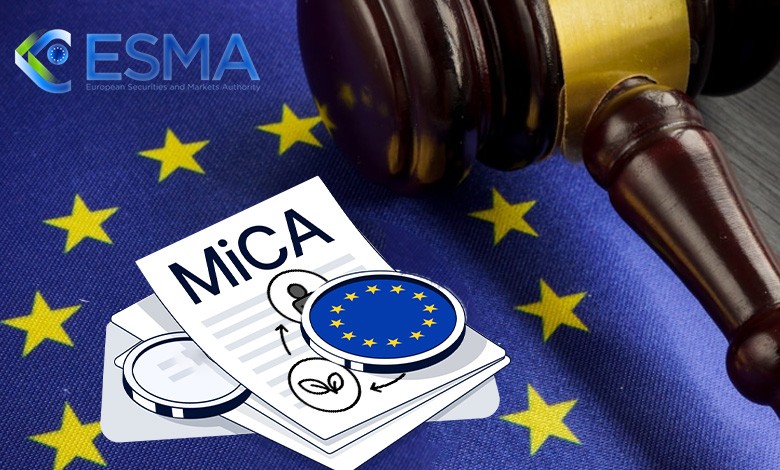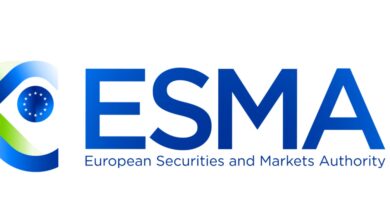ESG Disclosure is Coming to Crypto-Asset Service Providers in the EU

Last week, the European Securities and Markets Authority (ESMA) published its second final report on the Markets in Crypto-Assets (MiCA) regulation. This comprehensive document outlines critical regulatory measures that will shape the future of crypto-asset service providers (CASPs) in the European Union (EU).
Key Provisions of the ESMA Report
Sustainability Indicators
ESMA’s report emphasizes the need for sustainability indicators, focusing on climate and environmental impacts. CASPs will now be required to report these indicators, reflecting a growing trend towards sustainable finance. The mandatory and supplemental indicators specified by ESMA include:
- Total Energy Usage: Total amount of energy used for transaction validation and maintaining the distributed ledger integrity, expressed per calendar year.
- Renewable Energy Share: Share of energy used from renewable sources, expressed as a percentage of the total energy used per calendar year, for transaction validation and ledger maintenance.
- Energy Per Transaction: Average amount of energy used per validated transaction.
- Scope 1 GHG Emissions: Annual Scope 1 greenhouse gas emissions for transaction validation and ledger maintenance.
- Scope 2 GHG Emissions: Annual Scope 2 GHG emissions, expressed in tCO2e, for transaction validation and ledger maintenance.
- GHG Emissions Per Transaction: Average Scope 1 and Scope 2 GHG emissions per validated transaction.
Applicability and Scope
The requirements differ based on the type of crypto-assets and the energy consumption of their consensus mechanisms:
Crypto-Asset White Papers:
- 10 mandatory indicators for all crypto-assets.
- 1 mandatory key indicator and 5 supplementary key indicators for crypto-assets whose consensus mechanism consumes more than 500,000 kWh per year.
- 1 mandatory key indicator for crypto-assets whose consensus mechanism consumes less than 500,000 kWh per year.
CASPs Providing Specific Services:
- Services: Operating a trading platform, exchanging crypto-assets for funds, or exchanging crypto-assets for other crypto-assets.
- 10 mandatory indicators for all crypto-assets in relation to which services are provided.
- 1 mandatory key and 5 supplementary key indicators in relation to all crypto-assets whose consensus mechanism consumes more than 500,000 kWh per year.
- 1 mandatory key indicator in relation to crypto-assets whose consensus mechanism consumes less than 500,000 kWh per year.
CASPs Providing Other Services:
10 mandatory indicators for all crypto-assets in relation to which services are provided.
These distinctions aim to balance the compliance burden and target significant energy consumers, such as Bitcoin and other Proof-of-Work (PoW) mechanisms.
Continuity and Regularity in Services
To ensure stability and trust in the crypto market, the report details measures for the continuity and regularity of crypto-asset services. These measures are crucial for maintaining investor confidence and operational integrity.
Pre-and-Post-Trade Transparency
Transparency is a cornerstone of the MiCA regulation. The report sets out provisions for both pre-and-post-trade transparency on CASP trading platforms. This move aims to enhance market fairness and protect investors from potential manipulation.
Record-Keeping Obligations
CASPs will need to comply with stringent record-keeping obligations. The detailed requirements in the report ensure that all transactions and operations are well-documented, aiding in regulatory oversight and audit processes.
White Papers and Machine Readability
The report specifies the format and content requirements for white papers, which must now be machine-readable. This will facilitate easier access to and analysis of information by regulators and investors alike.
Public Disclosure of Inside Information
New standards for the public disclosure of inside information are outlined. These technical measures aim to prevent insider trading and ensure that all market participants have equal access to critical information.
Expert Opinion
Alex de Vries, Data Scientist at DNB and researcher at VU Amsterdam, shared his insights on the new ESG disclosure requirements:
“These are just some limitations to reduce the compliance burden a bit. If I’d be adding my personal thoughts, I’d say it’s clear that the objective was always to target big energy consumers such as Bitcoin/PoW mechanisms. Let’s not forget this compromise was reached after the EP originally wanted to ban CASPs from even offering investments in crypto-assets with unsustainable mechanisms. I think it’s a good thing they set some limitations here; you don’t want this to become a reason to avoid listing smaller assets with more sustainable mechanisms, simply because of high compliance costs to get all this data for relatively unknown assets.”
Impact on Crypto and Digital Asset Providers
The implementation of these provisions will have significant implications for CASPs operating in the EU:
- Increased Compliance Costs: CASPs will need to invest in systems and processes to comply with the new sustainability reporting, transparency, and record-keeping requirements. This might lead to increased operational costs but will enhance the overall market integrity.
- Enhanced Investor Protection: The focus on transparency and regularity aims to protect investors from market abuse and ensure fair trading practices. This could attract more institutional investors to the crypto market, seeking a secure and regulated environment.
- Sustainable Finance Alignment: By incorporating sustainability indicators, the regulation aligns the crypto industry with broader EU goals on sustainable finance. This could open up new opportunities for green financing and environmentally friendly crypto projects.
- Operational Challenges: The requirement for machine-readable white papers and stringent disclosure standards will require CASPs to upgrade their reporting and information dissemination practices. This could pose a challenge but also drive innovation in how information is managed and shared.
- Regulatory Clarity: The detailed technical standards and guidelines provide much-needed clarity on the regulatory expectations for CASPs. This clarity will help businesses plan and execute their strategies more effectively within the regulatory framework.
To SUM UP
ESMA’s final report on MiCA represents a significant step towards a well-regulated and transparent crypto market in the EU. While it introduces several new requirements for CASPs, these measures are designed to protect investors, enhance market integrity, and align the crypto sector with broader sustainability goals. As the industry adapts to these changes, the EU is poised to become a leading jurisdiction for regulated and sustainable crypto-asset activities. The European Commission will decide within three months whether to adopt the new technical standards, marking a pivotal moment for the future of crypto regulation in the EU





